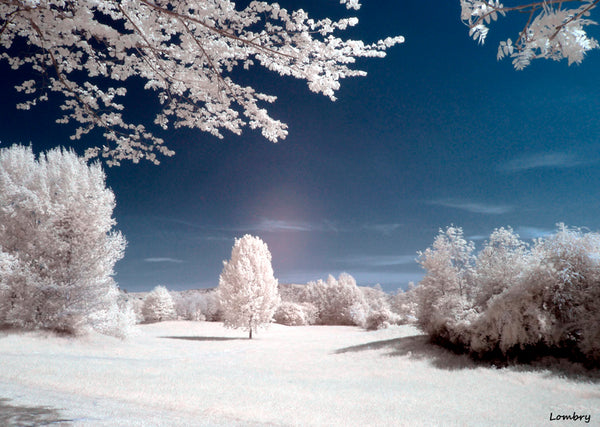Infrared photography the camera's sensor is sensitive to infrared light. Most camera's have an infrared blocker filter that filters out the infrared light so it only lets the visible light we see with our eyes through. The following are three ways to achieve infrared photography or real-time video work.

The fake infrared effect in photoshop. The cheapest option with the most limitations as it is not true infrared and only works well with bright blue skys on sunny days. It also lacks constency as settings would be different for each image. For a tutorial on this please click here
The affordable version with a few limitations. Most cameras often had infrared blockers, so an infrared filter and long exposures are needed to allow infrared light to get to the sensor. Hoya R72 is a good choice.
The limitations are:

Check out this in-depth tutorials:
The most expensive but has the least limitations. Most cameras have an infrared blocker over the sensor which needs to be removed and replaced with an IR filter that removes visible light. Many lenses which did display a "hotspot" (see above) cease to do so, and become perfectly usable for infrared photography.
The result is that you can use it like a normal camera, the sensor just captures the infrared wave length of light. You can also use infrared video mode.
There are a few limitations:
Which filters to use?
Different filters have different effects. Check out the explanation of filter choices as well as the video here - https://www.lifepixel.com/infrared-filters-choices
Which Cameras to use?
Also there is the type of camera to consider. Check out this explanation of advantages and disadvantages of different types of cameras - https://www.lifepixel.com/camera-considerations
Do it yourself:
The Sigma SD14, SD15 and SD1 has an IR/UV blocking filter that can be removed/installed without tools. The result is a very sensitive digital IR camera. You will need an IR filter to filter through the infrared light. The SD14 is the most affordable option, you can pick them up for £200/$300 second-hand on eBay. There is not live view mode or video mode on any of these, which is a problem as the IR filters will block the visible light so you need to focus and set-up composition before you attach the IR filter to the lens. Check out this tutorial on working with the these cameras with the IR filter taken out:
Further info on infrared photography can be found via the links below:
Comments will be approved before showing up.
Digislider Team
Author